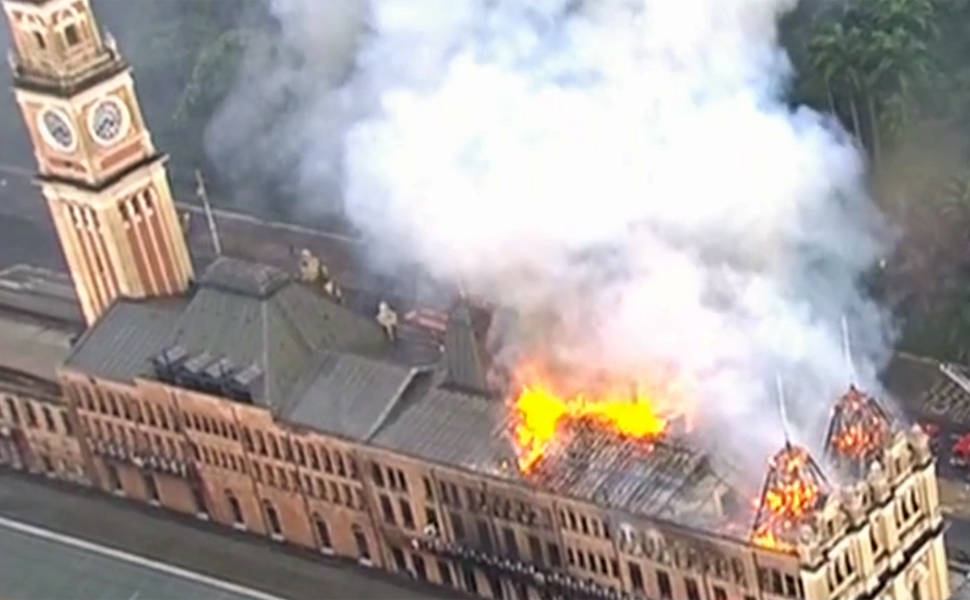Latest Photo Galleries
Brazilian Markets
17h39 Bovespa |
+0,74% | 125.124 |
16h43 Gold |
0,00% | 117 |
17h00 Dollar |
-0,97% | 5,1993 |
16h30 Euro |
+0,49% | 2,65250 |
ADVERTISING
Fire Damages Luz Station in São Paulo; Portuguese Language Museum Is Wrecked and Firefighter Dies
12/22/2015 - 10h56
Advertising
FROM SÃO PAULO
A fire destroyed part of the building that houses Luz railway and metro stations; a historic site in central São Paulo built 148 years ago.
The fire devastated the Portuguese Language Museum, one of the most visited in the city since its opening in 2006.
A civil firefighter who worked at the site was intoxicated with the smoke and died of cardiac arrest.
According to the Fire Department, the blaze destroyed the second and third floors of the building, but it did not affect the structure of the busy railway station, where 200,000 people pass through each day.
Speaking with journalists at the site, Governor Geraldo Alckmin (PSDB) said the museum will be rebuilt.
The fire started around 3:50 pm and was controlled 2 and half hours later. A huge cloud of gray smoke spread through the city centre, and the wooden roof of the building, restored in the last century, collapsed.
There were no visitors at the museum at the time, as the facility closes on Mondays. Employees reported that they left the building after hearing the fire alarm.
The museum, as well as the entire Luz complex, had no certification from the Fire Department. According to the corporation, the museum project was presented and approved in 2004, but it never got the inspection certificate.
Presenting the project is just the first step of the process to obtain the Fire Department Inspection Certificate.
The Luz railway station was built to be the great gateway of the city, from where the coffee beans were transported to the port of Santos as well as the new immigrants.
The facility, built in 1902, keeps many of its original features. Before that, a modest building housed the station since 1867.
"The steel roof came from Europe dismantled. The bricks were made here, in potteries chosen by the SP Railway [Company]," says the architect Lúcio Gomes Machado, a teacher at the University of São Paulo.
In the 1950's, with the car incentive, the railways were abandoned. In the building's centenary year, in 2002, the restoration works started. Part of the site, which was in poor conditions, now houses the Portuguese Language Museum.
Before the fire, the museum held an exhibition about Câmara Cascudo, an ethnographer from the State of Rio Grande do Norte.
To that end, there was a corridor with 20,000 books, which led to "Babylon", a wooden installation made to recreate the chaos of the author's library.
There were folkloric puppets and 1100 plaster figures representing Catholic and Candomblé religious entities.
According to his granddaughter, Camilla Cascudo, they were reproductions or objects made especially for the exhibition. His original collection is intact, in the city of Natal.
This was not the first fire at the site. In 1946, the fire engulfed part of the station. According to a report from "Folha da Manhã" newspaper, the blaze destroyed the famous clock, on top of a tower.
This time, the clock has not been damaged and it registered 6:15 pm when the firefighters controlled the flames.
Translated by JULIANA CALDERARI




